Flex, specs and heft Whether sticking with what they know or branching out into cutting-edge technology, Jets players put a lot of thought into their ‘lumber’ selections
Read this article for free:
or
Already have an account? Log in here »
To continue reading, please subscribe:
Monthly Digital Subscription
$0 for the first 4 weeks*
- Enjoy unlimited reading on winnipegfreepress.com
- Read the E-Edition, our digital replica newspaper
- Access News Break, our award-winning app
- Play interactive puzzles
*No charge for 4 weeks then price increases to the regular rate of $19.00 plus GST every four weeks. Offer available to new and qualified returning subscribers only. Cancel any time.
Monthly Digital Subscription
$4.75/week*
- Enjoy unlimited reading on winnipegfreepress.com
- Read the E-Edition, our digital replica newspaper
- Access News Break, our award-winning app
- Play interactive puzzles
*Billed as $19 plus GST every four weeks. Cancel any time.
To continue reading, please subscribe:
Add Free Press access to your Brandon Sun subscription for only an additional
$1 for the first 4 weeks*
*Your next subscription payment will increase by $1.00 and you will be charged $16.99 plus GST for four weeks. After four weeks, your payment will increase to $23.99 plus GST every four weeks.
Read unlimited articles for free today:
or
Already have an account? Log in here »
Hey there, time traveller!
This article was published 10/01/2025 (320 days ago), so information in it may no longer be current.
Long gone are the days of walking into the local sporting-goods store, pulling a Sher-Wood PMP 5030 off the rack, eyeballing the curve, checking its length and flex, as stiff as it was, and plunking down $20 for the (actual) piece of lumber.
In today’s ultra-competitive hockey world, a stick, costing upwards of $400, is often a custom-made, carbon-fibre piece of equipment tailored specifically to a player’s size, shape and position.
Sure, the physics behind shooting the puck are the same — turning potential energy into kinetic energy — but the permutations are seemingly endless.
The stick’s weight and whippiness (flex), along with the shape of the blade’s toe, height of its heel and degree of its curve are all factors waiting to be dissected down to the minutest details.
For a physicist, it’s simply a question of basic science. For a hockey player, it’s the equivalent of searching for the Holy Grail.
MIKAELA MACKENZIE / FREE PRESS The Jets stick rack at Canada Life Centre. Bauer is the No. 1 brand among Jets players.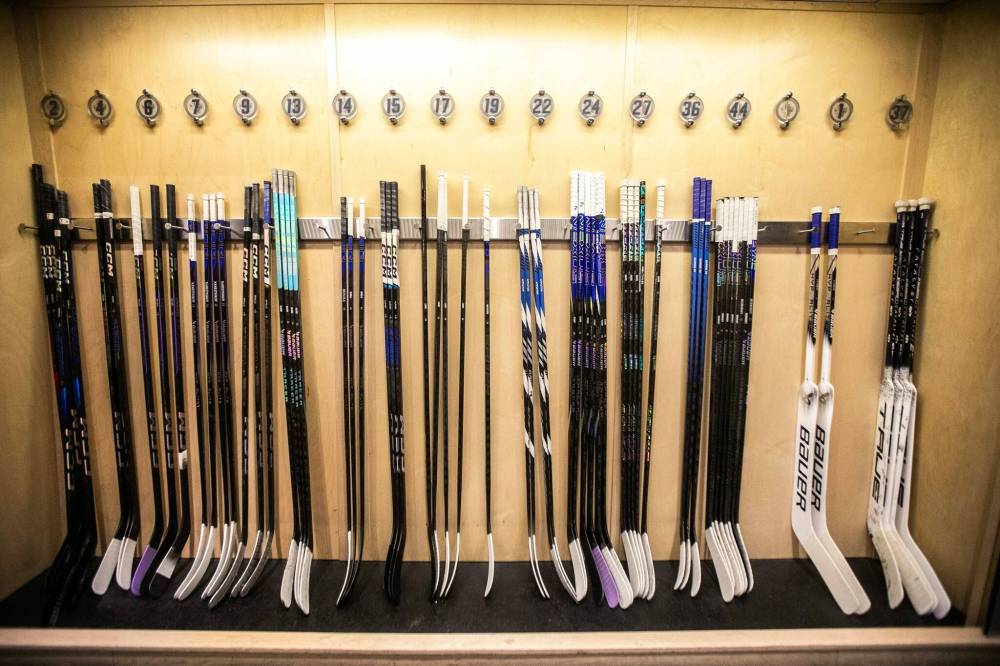
We asked seven Winnipeg Jets — four forwards and three defencemen — about what they look for when choosing their most critically important piece of equipment. It’s an approach that mixes together mad-scientist experimentation, superstition and tried-and-true practical evaluation.
And it’s a process that comes with its own shorthand language, where terms involving degrees of flex and blade patterns are reduced to numbers and famous players’ surnames.
Professional athletes tend to stay mum about their trade secrets, however, ask a player about their choice of lumber, and a story is sure to quickly follow.
But make no mistake — finding the right stick is serious business. Much like a musician searching for the perfectly crafted instrument, so too does the hockey player.
Top-line centreman Mark Scheifele remembers going to the store as a youngster and picking out the stick of his favourite player.
“Yzerman curve. First ever. We were big (Steve) Yzerman fans,” Scheifele says of the Detroit Red Wings superstar from the 1980s and ’90s.
MIKAELA MACKENZIE / FREE PRESS 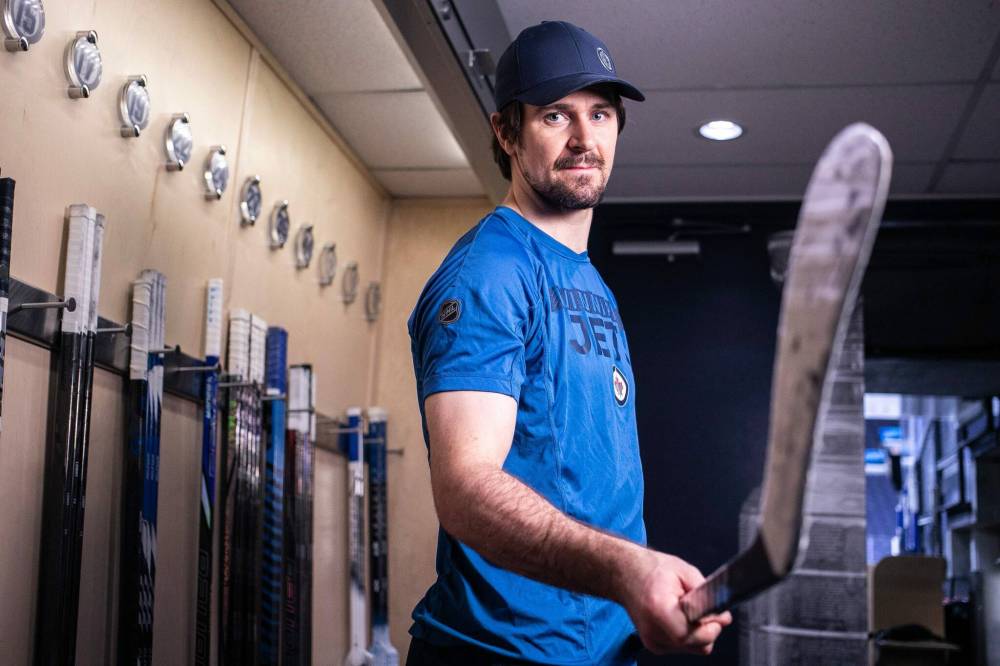
“I used a P88 for a while, the (Eric) Lindros pattern, when I was a kid, and for the longest period of time through junior, and then switched to the (Adam) Oates curve about eight years ago and I haven’t changed since.”
The Yzerman curve, one of three original composite patterns produced by stick maker Easton in the 1990s, was known as a ‘banana curve’ due to its huge bow in the middle of the blade.
Meanwhile, the Oates model is known to facilitate accurate passing, powerful shooting and deft puck control. It’s considered a good choice for all-around players.
Scheifele, now in his 12th NHL season, had a long discussion several years ago with skills coach and Hall of Famer Oates about finding the perfect stick specifications.
“If it’s like a millimetre off, I feel it out there.”–Mark Scheifele
“It’s not just about shooting, it’s not just about passing, it’s about being able to do every little thing,” Scheifele says. “Whether it’s taking a puck off the wall, handling a pass (or) making a backhand pass. It’s about having everything available to you.
“He just has so much knowledge about what you need to be able to do as a player, especially as a centreman. That was where the conversation started and it’s always a continual conversation.”
Several years ago, Scheifele’s then-linemate Blake Wheeler was going through a lengthy goal-scoring slump and decided to switch his blade pattern, which soon resulted in an end to the drought.
MIKAELA MACKENZIE / FREE PRESS FILES 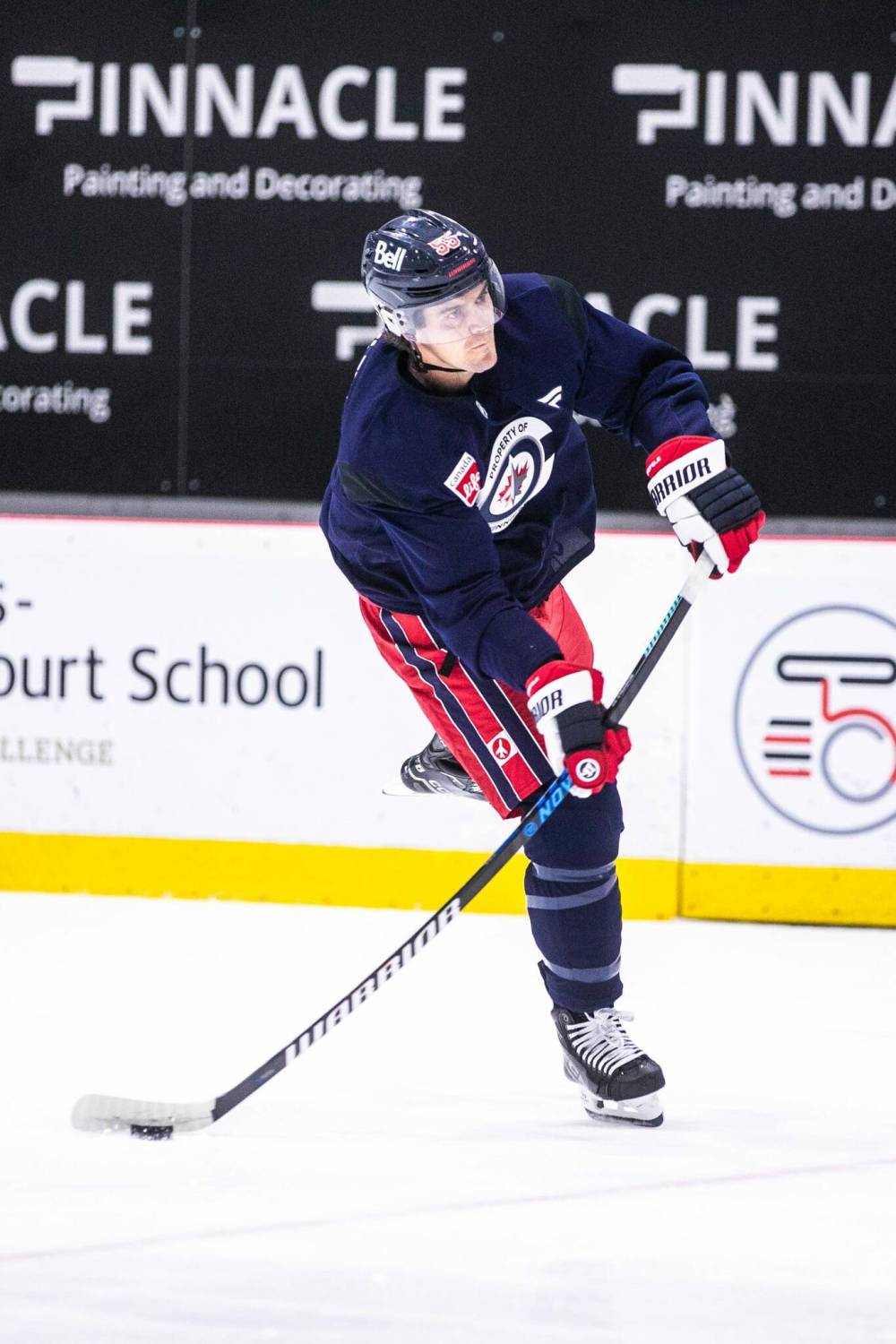
Scheifele hasn’t done anything quite as drastic during his career.
“Not really. I’ve found what I like,” he says. “I fidget with heights a little bit, depending on how I’m feeling and all of that stuff, but pretty much stick to the standard.”
Despite the tweaking, the stick’s shaft height has to be precise, otherwise Scheifele will notice.
“If it’s like a millimetre off, I feel it out there,” he says.
While many young players opt for lighter sticks with more whip (a lower flex number), Scheifele has chosen to buck that trend, using a 100 flex.
“I’m still a guy that’s old-school. I like a little heavier stick, to feel like there’s something in my hands, but I know a lot of the younger guys have gone to very, very light sticks,” he says. “I have a pretty stiff stick. For a centreman, with faceoffs and battles, it gives me the best range for everything.
“I’ve tried (sticks with flex in the 70s), but it just feels like a junior stick in my hands. I don’t know how guys do it, but to each their own.”
An antenna usually goes up when young players trying to establish themselves in the NHL are called into the coach’s office.
Did they do enough to make an impression? Are they going to be sent down to the minors? It was no different for Jets defenceman Haydn Fleury when he was trying to crack the Carolina Hurricanes’ lineup.
MIKAELA MACKENZIE / FREE PRESS 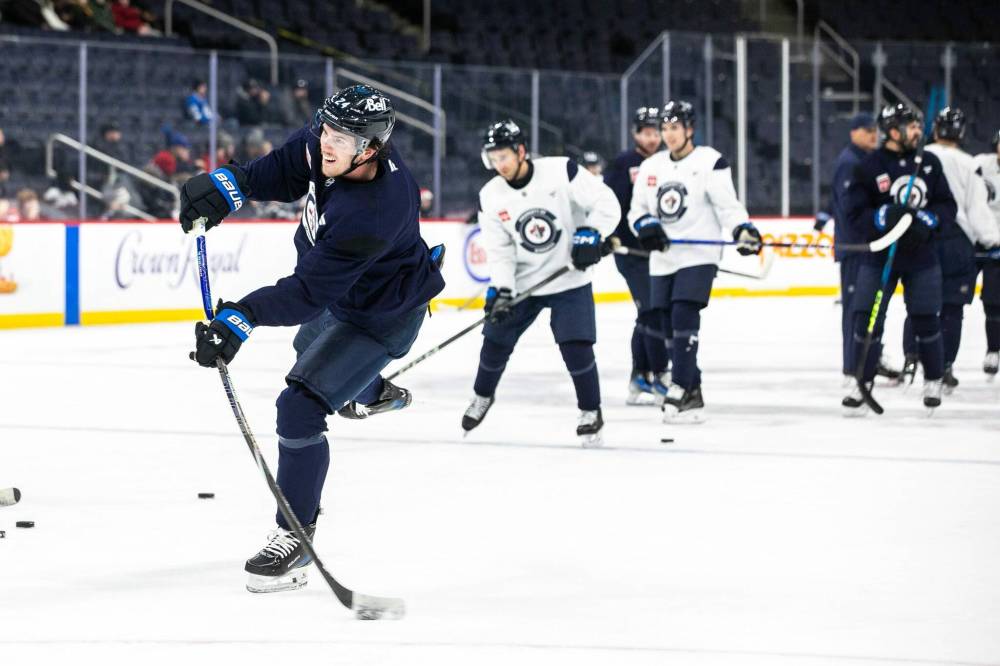
Once he noticed his sticks in head coach Bill Peters’ office, he had a good feeling.
“I had just made the team. I got into his office and all of my sticks were there and he said, ‘your stick is too short.’… In junior, I could get away with a smaller stick.”
It was not a matter up for debate. Fleury gave the longer stick — about an extra inch in length — a test drive and hasn’t looked back.
“Honestly, the length has pretty much stayed the same since the day he told me,” he says.
When it comes to flex, the change occurred in junior hockey, when he was starring for the WHL’s Red Deer Rebels.
Although Fleury was enjoying plenty of success, he was breaking sticks like they were going out of style, so he moved from an 87 flex to a 95.
“During my 18-year-old year, I probably broke 80 sticks,” he says. “I was getting bigger and stronger. I was just too strong to use the stick anymore. They were just snapping left and right.
“I’ve tried 100 (flex) since, but I don’t like it. The 95 is perfect for me.”
How often Fleury swaps out his lumber goes back to that rookie season in Carolina, when a former Jets player offered up a piece of advice.
“Lee Stempniak was like ‘it’s the NHL, use a new stick every game,’” Fleury says. “So, I’ve used a new stick every game since then.”
MIKAELA MACKENZIE / FREE PRESS 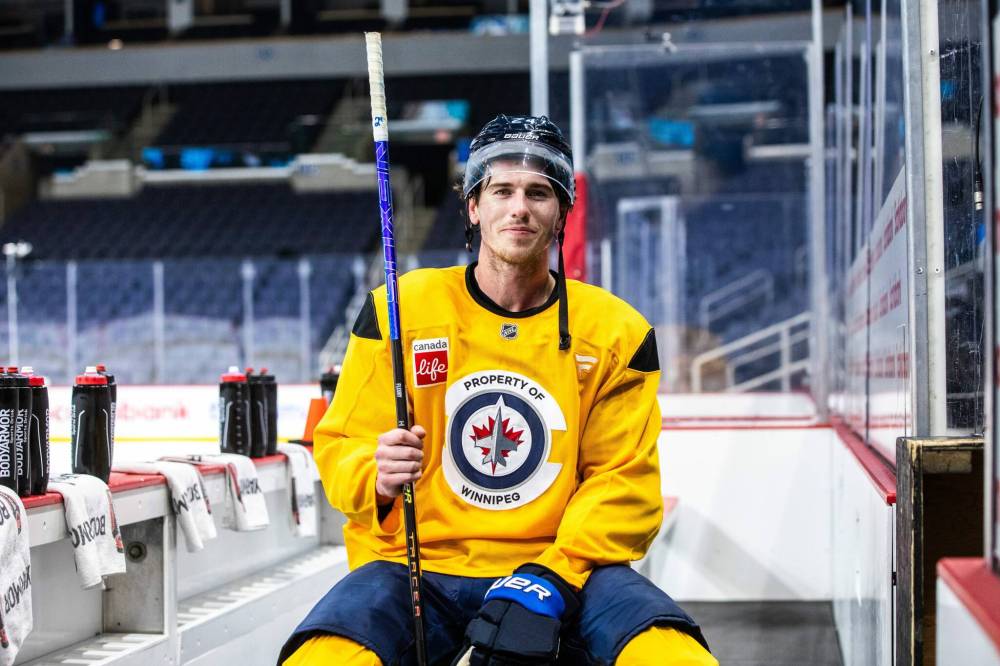
Fleury has stuck with the same curve for most of his playing career, but he’s made a slight tweak this season, adopting the curve used by his former Tampa Bay Lightning teammate, Nikita Kucherov.
“There’s a nice little pocket in the blade for the puck to sit. That’s the biggest thing I’ve noticed. It works for him. I don’t know if it works as well for me, but I’ve really liked it so far.”
Fleury has one other personal preference when it comes to his stick — he doesn’t tape a knob at the top of the shaft.
“I don’t know why you would have a knob. I feel like I would grip my stick down here instead of gripping my stick up here.
“You still see a couple of guys with really big knobs (like Winnipegger Mark Stone of the Vegas Golden Knights), but for the most part, you see guys going away from a big piece of tape at the end.”
In 2021, Jets defenceman Josh Morrissey made a significant change — and it involved going back to the future.
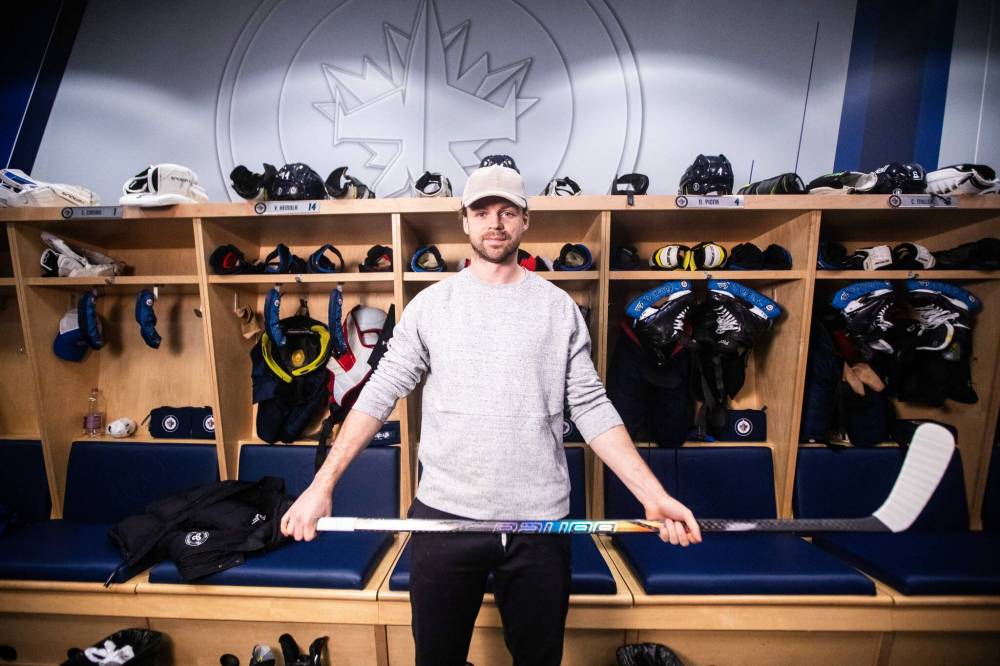
Not as far back as the era of actual wooden sticks, but to an older version of the Bauer model he used in his first year with the WHL’s Prince Albert Raiders.
“I’ve always been a gear nerd and have always been kind of tinkering with stuff, trying to find a little something here or there. A different feel, a little bit of an edge,” he says.
“Probably in the summer of 2021… I just had a thought to try an old model I had used a little bit back in the day. It was stick construction from around 2010. I got to try this old stick, to see what it was like to use. I loved it and decided to roll with it.
“Basically, it’s heavier than most of the other guys’ sticks by quite a bit.”
It may have been an oldie, but it’s proven to be a goodie for Morrissey, who has seen his offensive numbers jump dramatically while working his way onto many Norris Trophy ballots the past two seasons.
MIKAELA MACKENZIE / FREE PRESS 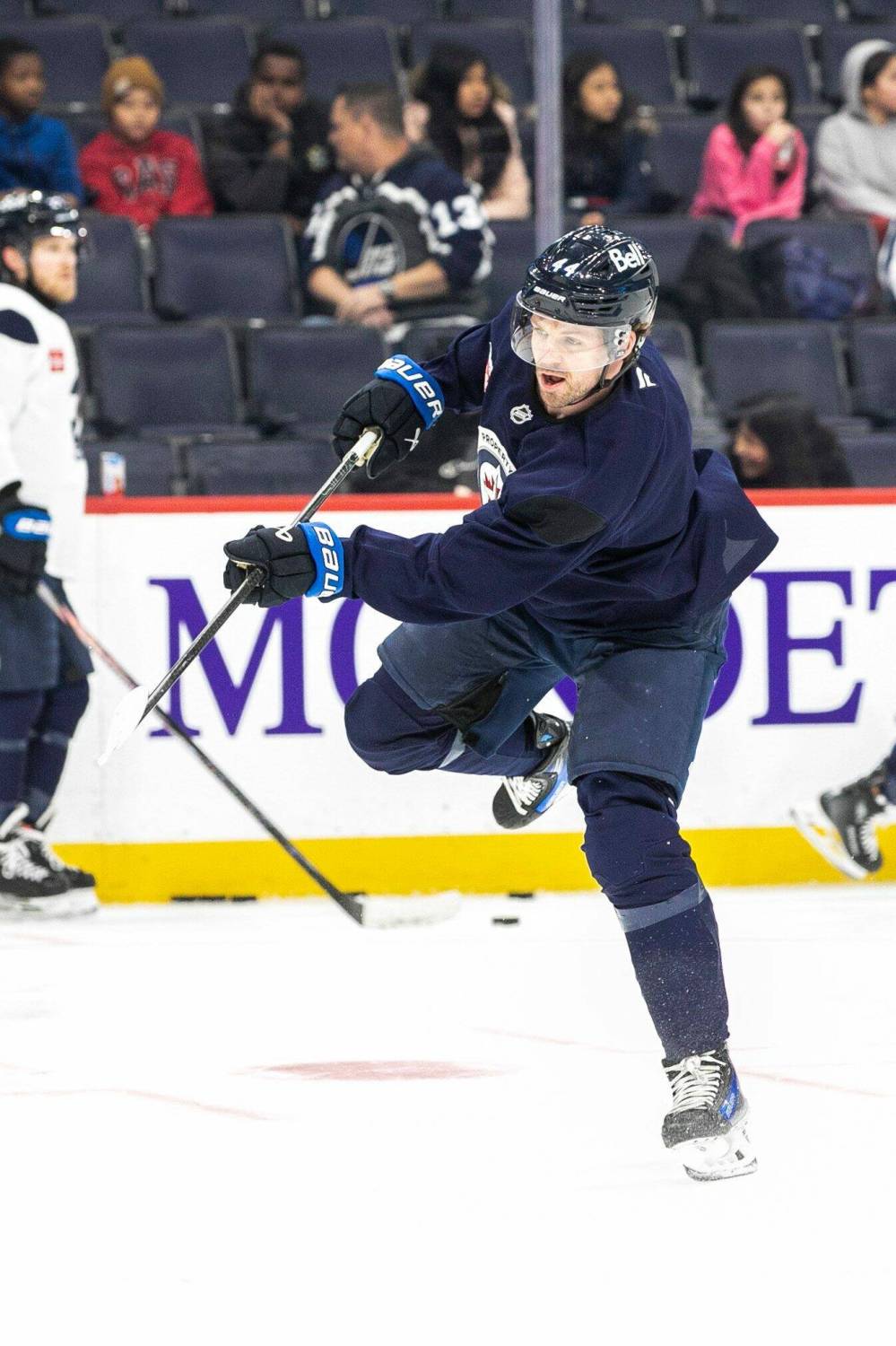
Morrissey isn’t sure how much longer he’ll be using the retro stick but notes veteran players like Kucherov and Steven Stamkos are also sticking with the same technology.
“There’s not many guys using that construction anymore, so I think Bauer would probably love me to get out of it at some point, so they can get rid of the old moulds,” says Morrissey, who uses the same curve as Scheifele, but a left-handed version.
It’s not that Morrissey is averse to change, it’s more about how the puck feels on the blade.
“There’s science that the new ones produce more energy, but when I feel the puck, it’s been a little bit different,” he says. “So, I’ve got a bunch of samples to try and get into the new stuff, because I do think there are probably some benefits to going with a lighter stick. But then there’s probably some benefits to having a little heavier one, too.”
As for the flex of his stick, Morrissey has dropped down from an 87 to an 82 — though that number could be a bit deceiving.
“I’ve changed the flex a little bit. I also find because it’s an old construction, they’re a lot stiffer,” he says.
“If I’m sampling a new stick that’s coming out, they’re way lighter and way whippier, so I would sample a 100 flex or a 95 because it relates more. Technically, I’m using 82 but they’re stiffer than that.”
Jets defenceman Dylan DeMelo recalls a story from his minor hockey days that still makes him chuckle. He had a coach who forbade players from purchasing the high-end composite sticks that were all the rage at the time.
“They were starting to make their rounds, but our coach was old-school. He said no one is using a composite stick,” says DeMelo, who didn’t use that type until he was about 13.
“It was pretty funny. We would go to these tournaments and these travel kids would have the latest Bauers and we had the wood sticks, and we would beat them. You could tell they were a little rattled about it.”
MIKAELA MACKENZIE / FREE PRESS
When DeMelo arrived at the junior level — he played for Mississauga Steelheads in the OHL — he remembers the thrill of seeing his name printed on the shaft of a stick for the first time.
“I thought that was pretty cool. I showed my buddies and stuff — and they thought that was pretty sweet.”
DeMelo has stayed true to the CCM model he used when he broke into the professional ranks in the American Hockey League. While it’s nice to have options, sticking with what helped him reach that level just made sense for DeMelo.
“I’ve tried other sticks, but when you use something for so long, there’s some familiarity there,” he says. “All of the sticks are great, it’s just about finding what works.”
What has changed over time is the length. While a longer stick helps for defending, particularly as a youngster, the pro game requires a stick allowing for a greater range of applications.
“As you get older, you realize a shorter stick helps with puck handling and being able to have your vision and stuff like that.”
So, what’s the difference between now and then?
“I used to use a stick at kind of mustache level,” he says. ”Over time, I’ve gone down to just under my chin.
“That’s a substantial difference over time, but it happened gradually. You definitely can’t go that big (all at once). You have to (do a little bit at a time), because it’s an adjustment.”
MIKAELA MACKENZIE / FREE PRESS Defenceman Dylan DeMelo has been shortening the length of his stick as his career advances. 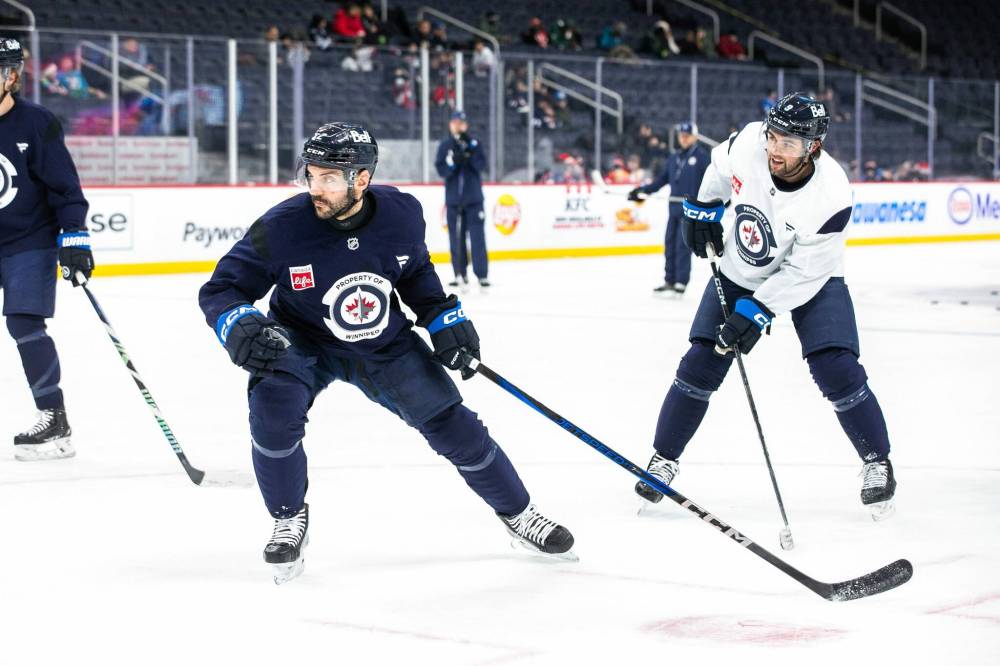
The tinkering also applies to his blade curve.
“Three or four years ago, I changed my pattern and I changed it again this year, to a bit different model and I’ve enjoyed it so far. Essentially, I would say it’s a little less of a toe curve. The lie (the angle between the shaft and blade) is a little different too, so there’s a little more blade on the ice.”
Lastly, DeMelo lowered his flex slightly as well, starting at 100 and landing at 95.
“It just felt like you can get the puck off (your stick) a little faster on your shots from the point. Time and space was a bit more of an issue when turning pro, but I found if I tried to go down to a 90 flex, it was a little too flimsy.
“Pucks were sailing on me. I even found I was sailing my passes, when you were used to snapping it, being heavy with that bottom hand. So, I need a little bit of that stiffness. For slap shots too, you’ve got to grip it and rip it.”
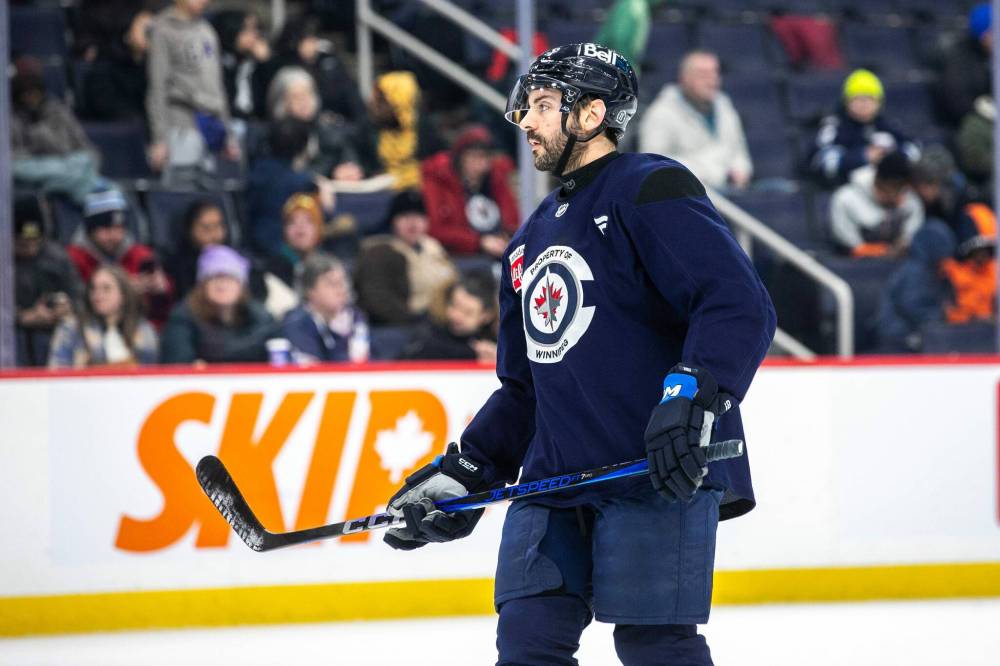
Like Morrissey, Jets captain, centreman Adam Lowry, is a bit of a throwback when it comes to sticks, preferring an older-style construction.
“It takes me a while to change. For one, I like the stiffness down low, just for faceoffs. I’ve used the same curve since I was 12. There’s not really a whole lot of magic to my stick.”
It hasn’t been for a lack of experimentation. Lowry tried out several newer models during the off-season before opting for the status quo.

“It’s cool to see the new technology, but for whatever reason I always go back,” he says.
“Some of it has to do with deadlines to order. It’s right when you’re getting into the thick of things for the summer, before you’ve really shaken off the rust (of the off-season). You have to make a decision.”
Lowry’s role as a checking forward also plays into the type of stick and curve he employs. His stick flex (102) is the second stiffest on the team behind defenceman Logan Stanley, who uses a 115.
“Once in a while, I’ll mess around and try new sticks. Last year, for a little bit, I tried a different curve. It was a P92 with just a little more toe (curve), then I realized there was a little too much dangle in my game, so I went back,” Lowry says. “I always joke that I sacrifice some offence in my stick for better defence.
“It’s one of those things where I feel I could probably get shots off quicker and things like that going down (in flex). Some of the great goal scorers are using 82 flex or 77 flex and (they weigh) 210 pounds. The stick whips and they get so much performance. They can shoot from any position.”
Does being involved in a lot of stick battles mean Lowry goes through more lumber than most players?
“No, I would say that’s all personal preference. Some guys want a new stick every game. I remember (former teammate) Patrik Laine had a power-play stick. He wanted the extra pop.
MIKAELA MACKENZIE / FREE PRESS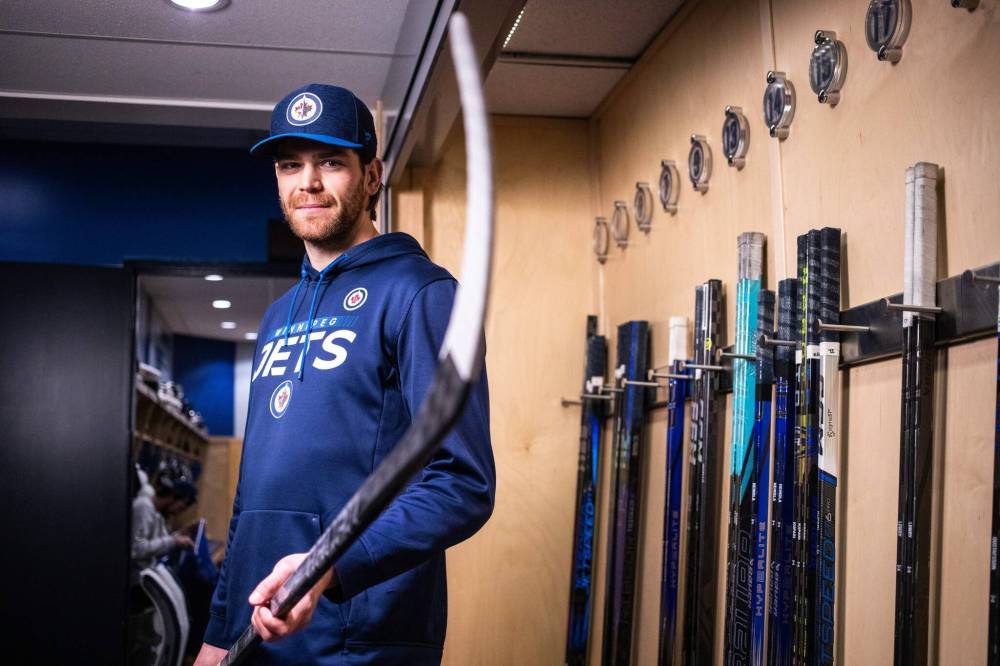
“He was using 80 to 100 sticks in a year, whereas I still re-use quite a few sticks. If it goes through a game and it feels fine, I’ll use it for the next one and generally, I cut and tape a few at the same time, so I don’t have to go through that process for a week or two.”
Having a father, Dave Lowry, who played nearly two decades of pro hockey (he’s currently an assistant coach with the Seattle Kraken), Lowry remembers the first time he got to try out the new stick technology.
“My dad would collect sticks for us,” Lowry says. “Generally, he would ask players on the other teams (for the sticks) we wanted. He knew quite a few guys around the league, so we have a pretty good collection. His collection is even better than the ones gifted to us.
“I remember my first one-piece was a Marc Savard (Easton) Synergy, cut down and spray painted black at the bottom third of the stick. I was 10 or 11 and it was like a 100 flex. I couldn’t flex that thing at all, but it was pretty special.”
Jets forward Gabe Vilardi is a fan of consistency when it comes to his sticks. He’s used the same curve since minor hockey and doesn’t plan on switching.
He made one tweak during the off-season though, dropping from an 87 flex to an 82.
“I just wanted to get more whip. I gave it a try in the summer and I really liked it, so I’ve stuck with it,” Vilardi says. “Last year, it felt like I was scoring a lot in tight and I wanted to score from distance a bit more.”
MIKAELA MACKENZIE / FREE PRESS Gabe Vilardi opts for a stick with more flex in hopes of extending his scoring range.
Vilardi scored his 19th goal of the season on Tuesday against the Nashville Panthers — putting him well on pace for a career high in goals — so it appears the change is working well.
“I just think as you get more into the season, the games pile up and having the whippier stick for me is allowing me to get more on my shots,” he says. “It’s not so much the release, but the power behind the shot.”
When does he know it’s time to swap out a stick?
“Unless I break it or something happens and I feel superstitious,” he says. “Maybe if I should have had a goal, I’ll switch.”
His tape style? It’s white and re-applied constantly.
“I change my tape job after every period. I’ve got to do that. I just think you have to have it fresh.”
As a youngster in Whitby, Ont., Cole Perfetti is part of a generation that grew up using whippier sticks.
“I use a 77, but it’s cut down to probably an 84 or 85, so it’s still pretty whippy. I like that because I like to be able to get (a shot) off quickly,” said Perfetti, now 23.
“If I’m not liking it, then I’ll change it up. A lot of it has to do with how the tape is doing.”–Cole Perfetti
As for the blade pattern, Perfetti started out with the Stamkos model but in recent years has switched to the P14 style that was favoured by Winnipegger Jonathan Toews when he won three Stanley Cups with the Chicago Blackhawks.
“The stick has changed a little bit, but the pattern is the same,” says Perfetti, before breaking down the intricacies. “A little bit mid-to-toe, as it gets further down to the toe, the curve has a little more to it. It’s a small blade. I don’t know why, it’s just something I’ve always used.”
MIKAELA MACKENZIE / FREE PRESS 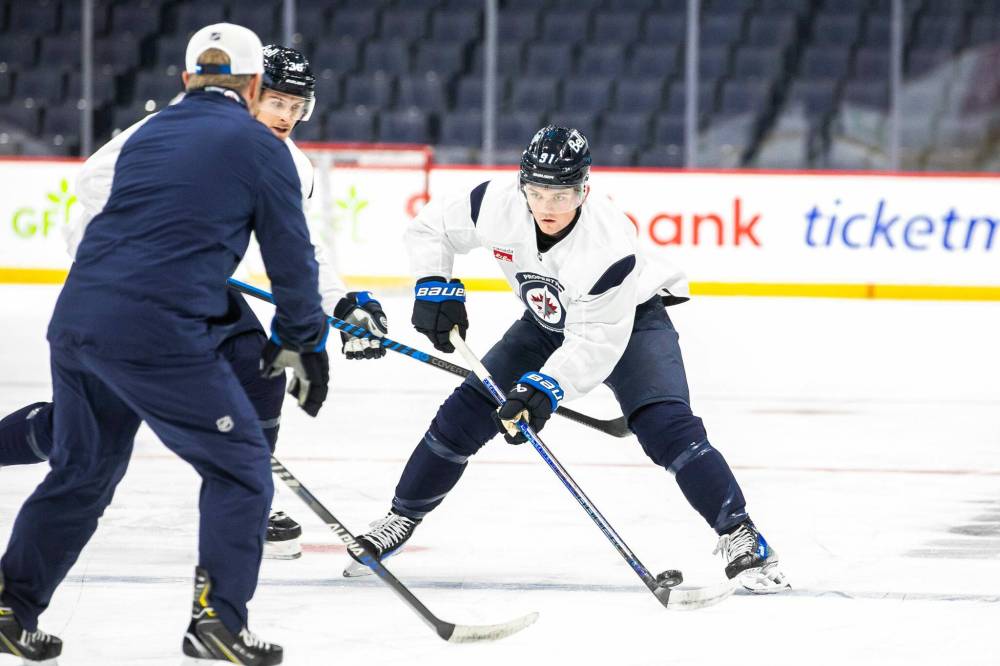
Whether he’s riding a heater or working his way through a dry spell, Perfetti doesn’t often stray from using white tape on his blade.
“I’m 95 per cent white tape. I was back and forth growing up, but since I’ve gone to pro, I’ve been pretty much all white…. I just like the way the white tape looks on my stick. It just catches my eye properly.”
While white is his go-to tape colour, he doesn’t have the same loyalty to a particular stick.
“If I’m not liking it, then I’ll change it up. A lot of it has to do with how the tape is doing. If it’s mid-period and the tape is falling apart, I’ll change it. All of my sticks are cut and everything is exactly the same, so I don’t mind going back and forth. It doesn’t bother me. Just get a fresh one.”
Jets equipment manager Jason McMaster has the difficult job of ensuring players are never short on sticks, but that’s not to say it’s a free-for-all.
“It depends on the player. For some guys, it’s a new stick every game. Some guys use a new stick every two to three games.”–Jason McMaster
Despite the misconception NHL players get their sticks for free, it is an ever-increasing expense absorbed by the teams.
“I’m not going to give you the number,” McMaster says. “It’s been a slow climb (since the Jets returned to the NHL in 2011) and it’s my job to keep that within a tolerable number for the organization.
“But the players are in the NHL, so they need what they need. You’ve got to take care of the players, take care of the organization and make sure everybody is happy.”
McMaster stores each player’s specific stick information in a database and always has a handle on how many sticks are in stock and when he might need to place another order with the various companies favoured by players.
Bauer is currently the most popular brand with the Jets. CCM has moved up to No. 2, while Warrior is No. 3 — though it was tops not long ago. True brand sticks are also on the radar, but are not as prominent among Jets players.
“For the regular season and training camp, I budget 82 (sticks) per player,” McMaster says. “Some guys use more than that and some guys use pretty close to that. It always balances out.”
When it comes to how often guys are going to the rack to grab a new twig, there’s a wide variation.
“It depends on the player. For some guys, it’s a new stick every game. Some guys use a new stick every two to three games,” he says.“It depends on how the stick feels. Sometimes, they’ll get a stick that just doesn’t feel right, so they’ll change sooner. But if it’s feeling really good, they’ll run with it.”
MIKAELA MACKENZIE / FREE PRESS Jets equipment manager Jason McMaster budgets for 82 sticks per player for the season.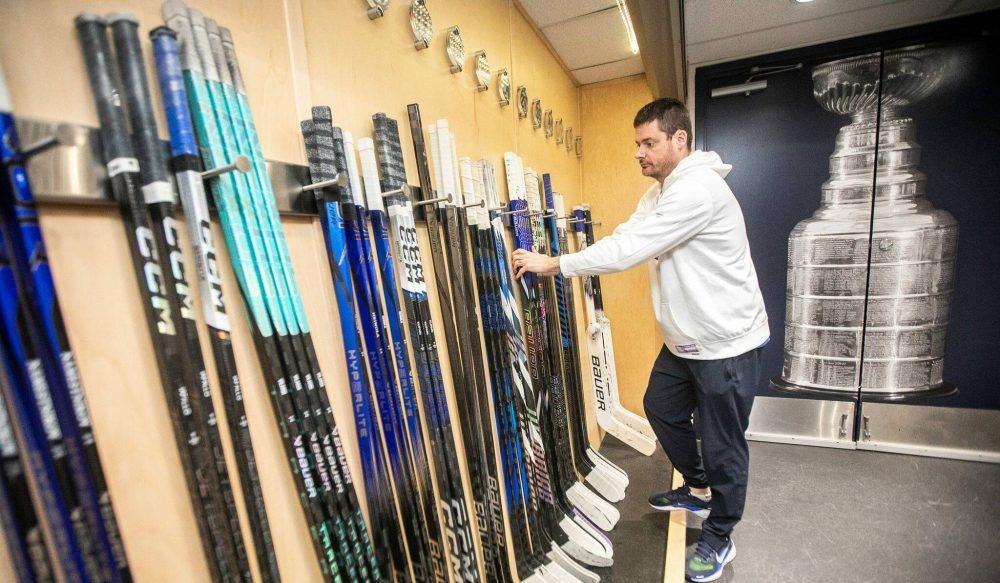
McMaster has witnessed a “crazy” evolution in technological advancements, dating back to his days in the WHL in the early 2000s.
Today’s sticks, while much lighter (most weigh just under a pound) are relatively durable compared to the early days of composite sticks, though some still explode at inopportune times because of the high-contact nature of the sport, not to mention the speed at which the puck travels.
“It depends on how intense a battle they get in. These guys want to be sure the stick doesn’t have a hairline crack in it, if you give a guy a cross check and it snaps in two,” McMaster says. “You’ve got your offensive players that need to make sure the stick stays in one piece when you get that shot.
“There’s no guarantee, obviously. You can get trauma to the stick during a game and you don’t realize it and you take that next shot and it’s going to happen.”
When asked how particular players can be about the finer details of their sticks, McMaster just smiles.
“We give them the eyebrow raise once in a while, but they know,” he says. “It’s impressive how in tune they are with their sticks.”
ken.wiebe@freepress.mb.ca
X and Bluesky: @WiebesWorld

Ken Wiebe is a sports reporter for the Free Press, with an emphasis on the Winnipeg Jets. He has covered hockey and provided analysis in this market since 2000 for the Winnipeg Sun, The Athletic, Sportsnet.ca and TSN. Ken was a summer intern at the Free Press in 1999 and returned to the Free Press in a full-time capacity in September of 2023. Read more about Ken.
Every piece of reporting Ken produces is reviewed by an editing team before it is posted online or published in print — part of the Free Press‘s tradition, since 1872, of producing reliable independent journalism. Read more about Free Press’s history and mandate, and learn how our newsroom operates.
Our newsroom depends on a growing audience of readers to power our journalism. If you are not a paid reader, please consider becoming a subscriber.
Our newsroom depends on its audience of readers to power our journalism. Thank you for your support.






